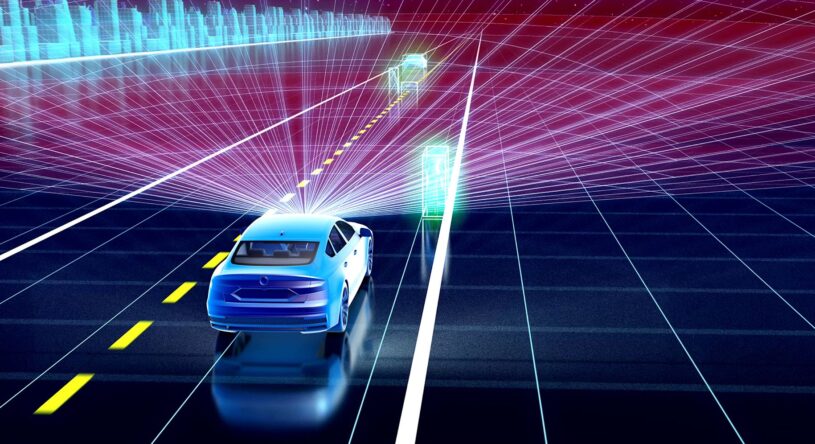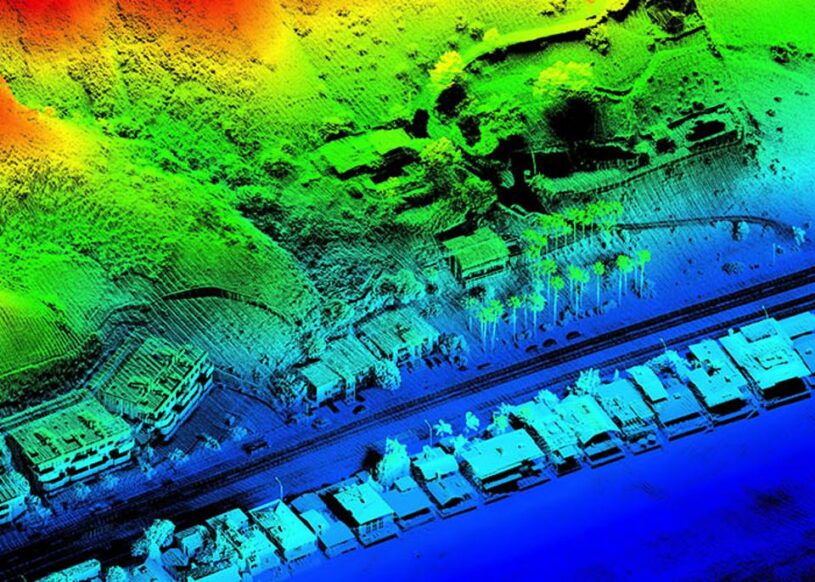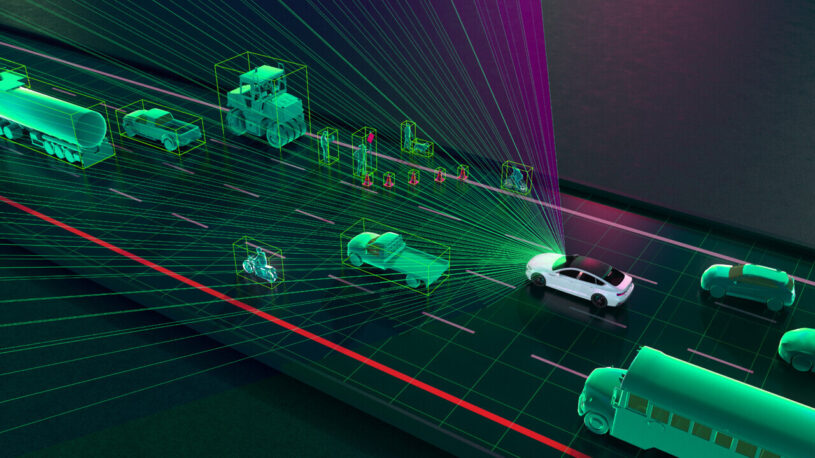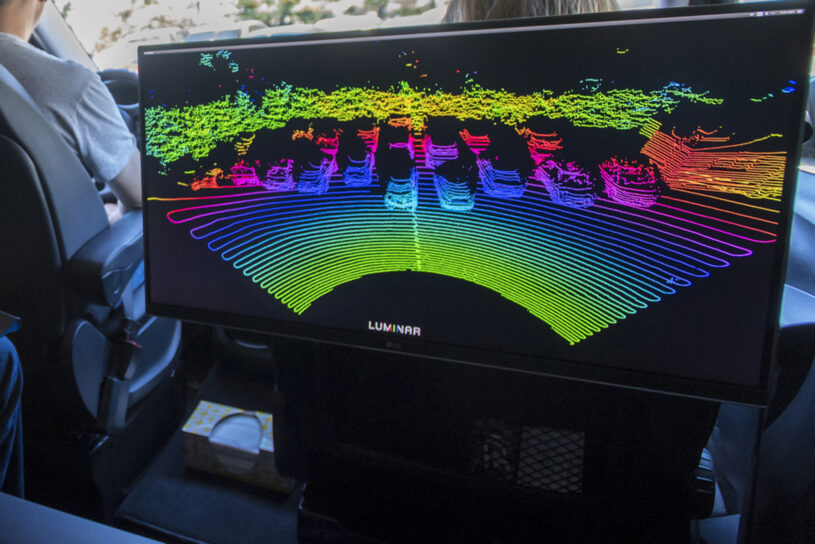Step into the realm of technological wonder, where beams of light dance through the air, revealing a hidden world that lies beyond human perception. Welcome to the captivating domain of LiDAR technology, where lasers and sensors intertwine to unlock a realm of unparalleled precision and vision. With its ability to map the world with remarkable accuracy, LiDAR, or “light detection and ranging” has emerged as the enigmatic force propelling industries forward, igniting imaginations, and reshaping the understanding of what’s possible.
Understanding the Raw Structure of LiDAR Technology

LiDAR, short for Light Detection and Ranging, is a remote sensing technology that utilizes laser pulses to measure distances and create highly accurate 3D maps of the surrounding environment. It operates on the principle of sending out laser beams and measuring the time it takes for them to bounce back after hitting objects in their path.
A typical LiDAR system consists of three main components: a laser source, a scanner or rotating mirror, and a receiver. The laser emits rapid pulses of light that travel toward the target area. When these pulses encounter objects, such as buildings, trees, or terrain, they reflect the LiDAR receiver. The receiver measures the time it takes for the light to return, allowing the calculation of precise distances to the objects.
By rapidly repeating this process and combining the data, LiDAR systems can generate detailed 3D point clouds that represent the shape, position, and density of objects in the environment. This data can be further processed to create high-resolution maps, models, or visualizations.
Types of LiDAR

- Airborne LiDAR: Airborne LiDAR systems are mounted on aircraft or drones to capture data over large areas quickly. These systems emit laser pulses from above and measure the reflected signals to create detailed 3D maps of the terrain, buildings, and vegetation. Airborne LiDAR is used in applications such as topographic mapping, floodplain modeling, and forestry.
- Terrestrial LiDAR: Terrestrial LiDAR, also known as static LiDAR or tripod-mounted LiDAR, is used for high-resolution scanning of a specific area from ground level. These systems are typically placed on tripods or other stable platforms and emit laser pulses in a 360-degree field of view. Terrestrial LiDAR is commonly used for building modeling, infrastructure inspection, cultural heritage documentation, and construction site monitoring.
- Mobile LiDAR: Mobile LiDAR systems are mounted on vehicles, such as cars, trucks, or boats, to capture data while in motion. These systems combine LiDAR technology with GPS and inertial measurement units (IMUs) to precisely geo-reference the collected data. Mobile LiDAR is widely used for road mapping, city modeling, transportation planning, and autonomous vehicle development.
- Bathymetric LiDAR: Bathymetric LiDAR is specifically designed for mapping underwater topography, including the depths of rivers, lakes, and coastal areas. These systems emit laser pulses that penetrate the water’s surface and measure the time it takes for the signal to return. Bathymetric LiDAR is employed in hydrographic surveys, coastal erosion monitoring, and marine habitat mapping.
- Solid-State LiDAR: Solid-state LiDAR systems utilize solid-state lasers, typically made of semiconductor materials, instead of traditional rotating or oscillating mirrors. These compact and durable systems offer faster scanning speeds, higher data accuracy, and improved reliability. Solid-state LiDAR is commonly used in autonomous vehicles, robotics, and industrial applications.
- Flash LiDAR: Flash LiDAR, also known as Geiger-mode LiDAR, uses arrays of single-photon detectors to capture millions of range measurements simultaneously. This enables rapid data acquisition over large areas with high point density. Flash LiDAR is utilized in applications such as wide-area mapping, defense, and security.
The Game-Changing Capabilities of LiDAR Technology

- LiDAR technology, with its remarkable capabilities, is spearheading a profound transformation across numerous industries, reshaping the way humans perceive and interact with the world. Here’s how LiDAR is leaving an indelible mark on various sectors:
- Autonomous Vehicles: LiDAR plays a pivotal role in enabling self-driving cars to navigate and perceive their surroundings. By emitting laser pulses and measuring their reflection, LiDAR generates high-resolution 3D maps of the environment, allowing vehicles to detect and identify objects with precision. This technology enhances road safety, enables efficient route planning, and paves the way for a future of autonomous transportation.
- Mapping and Surveying: Traditional surveying methods are being revolutionized by LiDAR. With its ability to rapidly capture highly detailed topographic data, LiDAR enables faster and more accurate mapping of landscapes, cities, and infrastructure. From urban planning and environmental monitoring to construction and disaster response, LiDAR streamlines processes minimizes costs, and enhances data-driven decision-making.
- Archaeology and Cultural Heritage: Uncovering the secrets of the past becomes an extraordinary adventure with LiDAR. By capturing detailed 3D scans of archaeological sites, LiDAR aids in identifying buried structures, mapping landscapes, and preserving cultural heritage.
- Forestry and Environmental Monitoring: LiDAR’s ability to penetrate dense foliage and capture detailed vegetation data is transforming the field of forestry and environmental monitoring. By generating accurate 3D models of forests, LiDAR aids in assessing tree density, measuring carbon storage, and identifying areas prone to wildfires or deforestation.
- Infrastructure Inspection: LiDAR is revolutionizing the inspection and maintenance of critical infrastructure such as bridges, railways, and power lines. With its ability to create precise 3D models, LiDAR assists in identifying structural defects, assessing asset conditions, and planning maintenance activities. This technology enhances safety, reduces costs, and prolongs the lifespan of vital infrastructure.
- Urban Planning and Smart Cities: LiDAR technology is at the forefront of shaping smart cities and urban development. By providing accurate 3D data on buildings, roads, and infrastructure, LiDAR aids in urban planning, modeling traffic patterns, optimizing energy consumption, and enhancing public safety. It enables efficient city management, fosters sustainable growth, and improves the quality of life for residents.
Conclusion

LiDAR has found applications in numerous fields, including autonomous vehicles, urban planning, forestry, archaeology, infrastructure inspection, environmental monitoring, and more. Its ability to capture detailed 3D data has made it a transformative technology, enabling enhanced decision-making, increased efficiency, and improved safety across industries. As LiDAR technology continues to advance, its potential for innovation and impact is only expected to grow.
